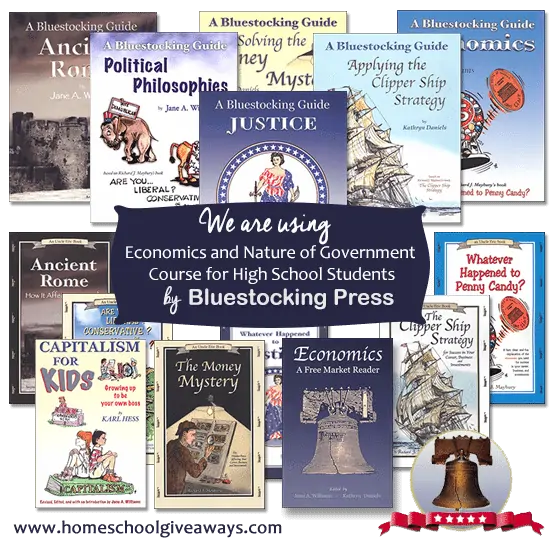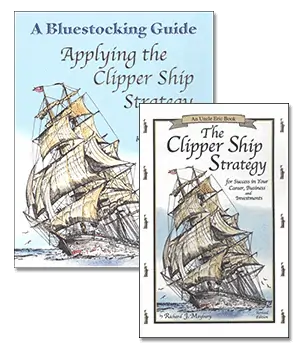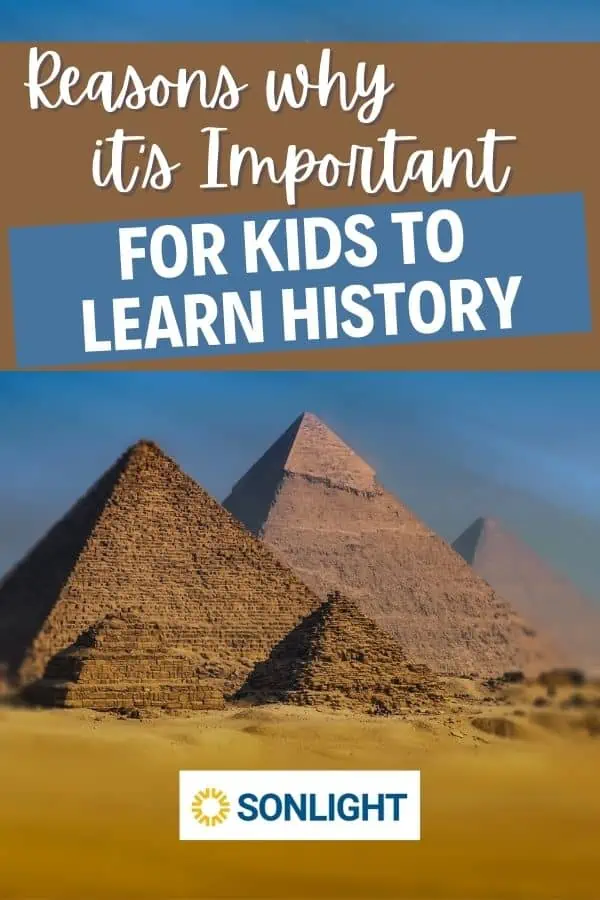What we are using for Economics & Government this year
Published:
June 30, 2015

Contributor:
Carrie
Disclosure: This post may contain affiliate links, meaning if you decide to make a purchase via my links, I may earn a commission at no additional cost to you. See my disclosure for more info.
Our family is really into politics, economics, and of course entrepreneurship (my husband and I both have a couple of businesses.) When I owned my curriculum store, Bluestocking Press was one of our best sellers & I am excited to finally be putting their curriculum to use in our homeschool!
I plan to lay low on making her read a ton of other books, as reading is not really her thing….but I am confident that she will enjoy reading these selections from Bluestocking Press. We REALLY want our daughter to have a firm understanding on Government, Economics, and the political realm (besides what my husband makes her watch on Fox News.)
Economics and Nature of Government Course for High School Students
This is the package that we are using from Bluestocking Press this coming school year for tenth grade. They package up all of the resources and mark it down when you purchase it together. They are also available for purchase individually.
This set includes the Economics for High School Students Course together with Government (Nature Of) and Civics Course for High School Students, less the duplicate titles that are included in both courses. Together these courses will give your high school students a .5 Economics credit and a .5 Government credit. These books have been used by students ages 12 and up, but are best suited for most students ages 14 and up.
Using the epistolary style of writing (using letters to tell a story), Mr. Maybury plays the part of an economist (Uncle Eric) writing a series of letters to his niece or nephew (Chris). Using stories and examples, Mr. Maybury gives interesting and clear explanations of topics that are generally thought to be too difficult for anyone but experts.
About the Bluestocking Guides
Bluestocking Guides are designed to reinforce and enhance a student’s understanding and retention of the subject matter presented in the guide’s corresponding book. 6 of the 8 books in this set include a Bluestocking Guide.
Each Bluestocking Guide includes comprehension questions relating to specific chapters within the primer. These include: Definition, True/False, and Short Answer/Fill-in questions. Answers are located in the back of the study guide.
Application Exercises are also given for certain chapters. Generally, these ask the student to apply the knowledge he/she learned from a given chapter of the primer to “real world” situations. This way the student may personalize the information to better retain and apply the knowledge gained from the primer. Application Exercises typically include: Essay assignments, Research projects, and thought questions to facilitate student-instructor discussion.
Many Bluestocking Guides will also include suggestions for further study (books, movies, etc.). A final exam is included and answers are located in the back of the study guide.
Titles included in the set:

A fast, clear, and fun explanation of the economics you need for success in your career, business, and investments.
In Whatever Happened to Penny Candy? Richard Maybury uses historical events from Ancient Rome to explain economic principles. This clearly written book about economics is a remarkably easy and fun explanation of investment cycles, velocity, business cycles, recessions, inflation, the demand for money and more.
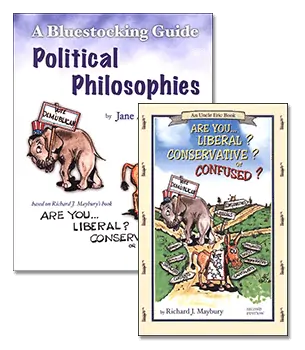
Are You Liberal? Conservative? or Confused? by Richard J. Maybury discusses political labels: Liberal, conservative, left, right, democrat, republican, moderate, socialist, libertarian, communist — what are their meanings and economic policies, what plans do their promoters have for your money, and what model do they follow?
Are You Liberal? Conservative? or Confused? contains clear, concise explanations. Explanations of facts and fallacies. And raises the question: Does inconsistency to the original American philosophy endanger liberty?
The Clipper Ship Strategy: For Success in Your Career, Business, and Investments and companion guide: Bluestocking Guide: Applying the Clipper Ship Strategy
The Clipper Ship Strategy by Richard J. Maybury explains how government’s interference in the economy affects business, careers, and investments. It’s a practical nuts-and-bolts strategy for prospering in our turbulent economy.
Conventional wisdom says that when the government expands the money supply, the money descends on the economy in a uniform blanket. This is incorrect. The money is injected into specific locations causing hot spots or “cones.”
In The Clipper Ship Strategy Mr. Maybury explains a system for tracking and profiting from these cones, for locating genuine money-making opportunities, and for avoiding those which are false or dangerous. Includes step-by-step instructions, and clever illustrations that make the system easy to understand. Explains how to cope with recessions and avoid unemployment.

Whatever Happened to Justice? by Richard J. Maybury explores America’s legal heritage, and shows what’s gone wrong with our legal system and economy and how to fix it.
Mr. Maybury discusses the difference between higher law and man-made law, and the connection between rational law and economic prosperity.
Whatever Happened to Justice? introduces the Two Laws that Mr. Maybury writes are necessary for a civilization to develop and advance:
1.) Do all you have agreed to do, and
2.) Do not encroach on other persons or their property.
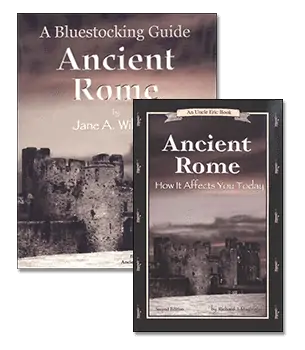
Ancient Rome by Richard J. Maybury discusses what happens when higher law principles and a free market economy are ignored.
Mr. Maybury uses historical events to explain current events, including the wars in the former Soviet Empire, and the legal and economic problems of America today. Is your government making the same choices that led to the fall of Ancient Rome? Will history repeat?
Why is ancient history important to us today?
To build a better future we need to know how we got where we are today. The political trend that has dominated the world for 2,000 years, including the investment markets, remains almost unrecognized. Author Richard J. Maybury calls it the Roman Disease.
Does America have the Roman Disease? Is there a cure? Or will America repeat the mistakes of Ancient Rome and collapse into poverty, decay, ruin and war?
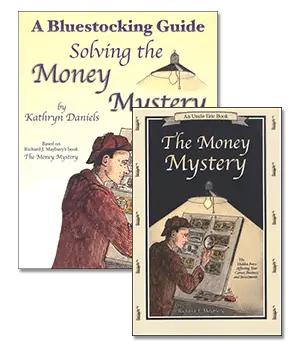
The Money Mystery further expands on the economic model presented in Whatever Happened to Penny Candy?
The Money Mystery explains the hidden force affecting your career, business, and investments. Some economics refer to this force as velocity, others to money demand. Whichever term is used, it is one of the least understood forces affecting your life. Knowing about velocity and money demand not only gives you an understanding of history that few others have, it prepares you to understand and avoid pitfalls in your career, business, and investments.
During the 1980s the velocity of circulation of the dollar became erratic; now the whole country is affected. The Money Mystery explains why Federal Reserve officials remain so afraid of inflation, explains precautions you should take, and explains the wild swings in the stock market.
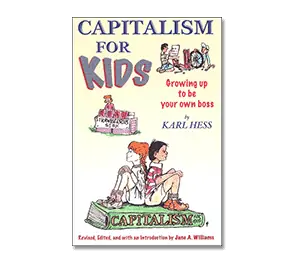
Capitalism for Kids: Growing Up To Be Your Own Boss by Karl Hess is an outstanding introduction to the philosophy of entrepreneurship. It stresses how a person can earn a profit in business while maintaining the highest possible standards of honesty and integrity.
Includes a self-test to help the reader determine how enterprising he/she really is, as well as an excellent chapter on “Capitalism and Other Isms” that clearly defines capitalism, democratic socialism, socialism, and communism.
Although written with young people in mind, many adults will benefit by reading this book, especially the section which was written specifically for parents and teachers.
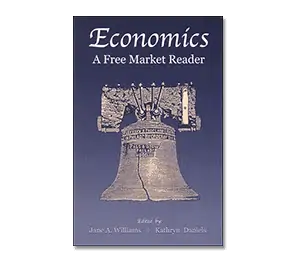
Economics: A Free Market Reader is a collection of thirteen articles by noted economists selected to enhance students’ understanding and appreciation of the subject of free market economics.
Economics: A Free Market Reader also includes two types of study questions (original to the book): “What Do You Think?” questions, and “Thought Questions”.
Prior to each article the “What Do You Think?” questions should be answered based on the reader’s current knowledge and/or opinion of the topic. These answers should be revisited after reading the article to see if the perspective/knowledge base of the student has changed.
Following each article are “Thought Questions” which are designed to facilitate student-teacher discussion, and to enhance the student’s understanding and appreciation of the subject matter.
Series Information: Economics: A Free Market Reader is not part of a series, though Bluestocking Press highly recommends reading it in conjunction with Richard J. Maybury’s book Whatever Happened to Penny Candy? and its corresponding student study guide: A Bluestocking Guide: Economics.
When you purchase the set, you also get: Jonathan Mayhew Sermon (PDF only)
Mayhew was pastor of West Church in Boston in 1750. Mayhew’s sermon points out that there is a Higher Law than any government’s law. His sermon encouraged his listeners to choose between Higher Law and their government’s law, when one was in conflict with the other. John Adams recommended that everyone read it. So does Richard Maybury.
For a suggested order of reading these books, please click here.
After my daughter uses these books, she will write a full review and essay on what she learned. I cannot wait to share it with you after her tenth grade year!

